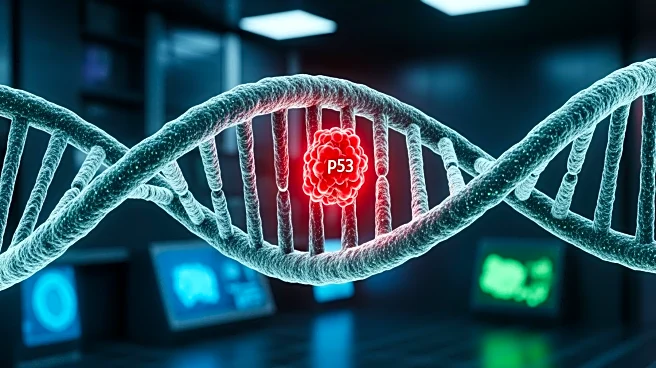What's Happening?
Researchers at NYU Langone Health have discovered a promising new approach to combat lung cancer by inducing a type of cell death known as ferroptosis. This process involves the accumulation of highly
reactive molecules that signal the self-destruction of overly stressed cells, including cancer cells. The study, published in Nature, highlights the development of an experimental drug that blocks the action of ferroptosis suppressor protein 1 (FSP1), significantly reducing tumor growth in mice with lung adenocarcinoma (LUAD) by up to 80%. LUAD is the most common form of lung cancer among nonsmokers, accounting for about 40% of cases. The research team genetically engineered mice to delete the FSP1 gene in lung cancer cells, leading to increased cancer cell death and smaller tumors. The study also found that an FSP1 inhibitor, icFSP1, improved the survival of mice with lung tumors.
Why It's Important?
This breakthrough is significant as lung cancer remains the leading cause of cancer-related deaths worldwide. The ability to induce ferroptosis in cancer cells offers a novel therapeutic strategy that could potentially improve survival rates for patients with lung adenocarcinoma. The study suggests that targeting FSP1 could be more effective and have fewer side effects than targeting other ferroptosis suppressors like glutathione peroxidase 4 (GPX4). The findings pave the way for developing new treatments not only for lung cancer but potentially for other solid tumors such as pancreatic cancer. This research could lead to the development of clinical therapies that harness ferroptosis, offering new hope for cancer patients.
What's Next?
The research team plans to optimize FSP1 inhibitors and explore the potential of ferroptosis as a treatment strategy for other types of solid tumors. Future studies will focus on translating these laboratory findings into clinical therapies for cancer patients. The ongoing research aims to refine the drug's efficacy and safety profile, potentially leading to clinical trials and eventual approval for use in humans. The success of this approach could revolutionize cancer treatment by providing a new mechanism to target and destroy cancer cells.











